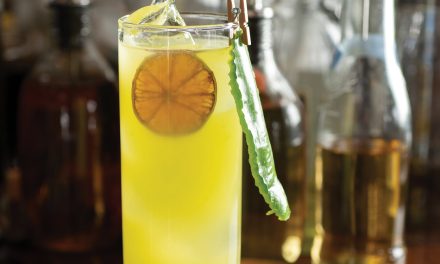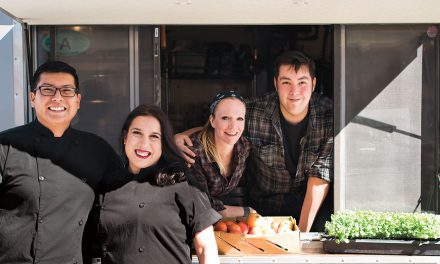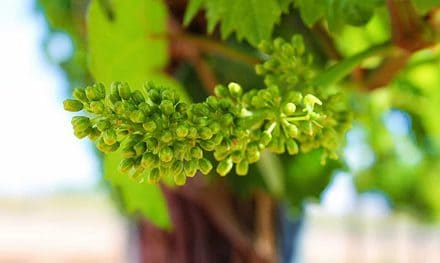LOCAL HERO: BEVERAGE ARTISAN, BEER
An Interview with John Rowley, Co-Owner and Brewer
Photos by Stephanie Cameron

Head brewer Jennifer Treu, assistant brewer Jennifer Arvizo, and co-owner and brewer John Rowley.
The beer business is one of camaraderie and collaboration. If you need help, there’s no shortage of brewers willing to lend a hand, as Rowley Farmhouse Ales’ co-owner and founding brewer John Rowley knows from his nine years as president of the Sangre de Cristo Craft Brewers, an accredited local home-brewing club with more than one hundred members. An accomplished brewer with more than fifteen years of experience, Rowley’s focus is on live-culture sources and mixed-culture fermentation. He’s won more than eighty national and regional awards since starting to compete in brewing competitions in 2010. Not surprisingly, Rowley enjoys science—he has worked as a research chemist at Los Alamos National Laboratory for twenty-one years—as well as baseball, all things beer, bicycles, and time with his friends and old but loving dog, Buddha.
You brew a variety of styles, but farmhouse ales are your base. For the uninitiated, what is mixed-culture fermentation, and what role do yeasts and bacteria play in making a saison a saison, a gose a gose, and a Berliner Weisse a sour?
Mixed-culture fermentation is the use of the combination of multiple strains of brewer’s yeast, wild yeast, and/or souring bacteria. More typical beers that you would encounter like an India pale ale or a Mexican-style lager would usually use a single strain of top-fermenting ale yeast or bottom-fermenting lager yeast. The idea in the common IPA would be to limit yeast expression to yield a beer that focuses on hop flavors. Mixed-culture fermentation aims for the opposite; we strive for fermentation-driven flavors. A saison is driven by the selection of phenol-producing brewer’s yeast strains (such as saccharomyces) and/or wild yeast (such as brettanomyces) and a mix of barley, wheat, and/or lesser-used grains like spelt or rye. Gose is a German beer that was mostly brewed in and around Leipzig, and features a salinity from the water in that region. It is typically a simple beer brewed with barley and wheat, very little hops, and a souring bacteria like lactobacillus and a German ale yeast working together to both provide sourness and typical ale fermentation. The Berliner Weisse is pretty much the same as the gose, but without the salinity.
Your descriptions of your beers display a belief that details matter. Can you walk us through the components of a single beer—say, Fields of Rye—and explain how they come together?
Details do matter! I think paying attention to the small things pays big dividends in the end. That said, I also value simplicity in grain bill design, and every ingredient needs to have a specific reason to be there, unless you are trying to rid it from your inventory. In home brewing, you see the latter expressed as the “kitchen sink beer,” which is a hodgepodge of ingredients left over from other brew days. Fields of Rye is designed exactly with that mindset [of simplicity meeting specificity]. It is made up from a base of pilsner malt, Belgian aromatic malt for color, and about 20 percent rye from Weyermann in Germany. It is hopped/bittered with Styrian Golding hops, just enough to offset any residual malt sweetness (which is not much when you use the highly attenuative yeast we do), and then fermented with a monoculture of French saison yeast. The result is a flavorful beer, with hints of white pepper and clove, and a light malt-sweet background and soft, spicy note from the rye.
Who touches each beer that you produce, and how did they come to be a part of the Rowley team?
Our brewing team is made up of Jennifer Treu, our head brewer; assistant brewers Jennifer Arvizo and Roger Pacheco; and myself. A couple others from the front of the house come help on packaging days. Nestor Cabello-Devora has been helping out on these days as of late, as well as Ludy Batres.

Beer flight at Rowley Farmhouse Ales.
Do you have a favorite local ingredient? How do you use it?
I’m really into White Sonora wheat, which for a long time I have sourced from BKW Farms in Marana, Arizona. Not super local, but in a regional sense it is. Lately we’ve been getting some from a local farmer, but what we had just burned up in our recent fire. White Sonora wheat is nutty and rich, and brings a wonderful earthy presence to our beers that use it. I also like getting native neomexicanus hops, but these aren’t readily available unless I buy the ones grown in the Yakima Valley. I have been getting some from Randall at Sherrog Hops out in Pecos, but since he’s still just getting geared up, he doesn’t always have a lot each harvest.
How does sustainability factor in your sourcing of hops and grains?
As a really small brewery, we don’t have the means to be focused 100 percent on sustainability, but it is definitely in our plans for growth going forward. We like to source from local vendors and farms, but we also need to be sure we get the quality we need. We use base malts from Weyermann and Rahr, who both put sustainability at the forefront of their businesses. Hops are a big water user, so it makes sense to buy hops from regions like the Yakima Valley to take advantage of their relative abundance of water.
We also provide Beck & Bulow with our spent grain to feed their animals, then serve those meats in our taproom. Sustainability isn’t usually the path of least resistance, but as mindsets change, it seems to be getting easier to achieve.
Describe a perfect beer and food pairing for late afternoon in monsoon season.
The perfect pairing for me would be a big bowl of cold gazpacho and a goblet of table saison like our La Comunicación or Le Petit Prince from Jester King. Simple yet heavenly! Let it rain!
In addition to your own beers, you serve a number of beers from other breweries. Why, and what are some of your favorites?
We serve a variety of other beers so that we can focus on the style we want to brew yet provide our customers a range of offerings. Since we don’t have the ability to brew on a larger scale, we choose to specialize, and buy beers from all the other amazing breweries out there to fill the rest of the taps. This gives us a wide variety, both on draft and in our bottle list, and you’ll have a comprehensive beer experience when you come to our place.
I wish we could get more Cantillon, as they are great bottles to enjoy with a meal, but the availability has dropped considerably with the demise of Shelton Brothers. We do have another lambic in
3 Fonteinen (delicious!), and I enjoy some of the heftier offerings in the colder months, like the barrel-aged Nevermore barleywine from Ex Novo in Corrales, as well as the Utopias barrel-aged World Wide Stout from Dogfish Head. I really enjoy our Blackest Friday event, as we bring out the best barrel-aged imperial stouts we can gather up throughout the year.
Anything else you’d like to share with edible readers?
From all of us at Rowley Farmhouse Ales, I want to thank you for the recognition of all our hard work and efforts. We don’t make beer the easy way, as our system is 100 percent manual. It takes a lot of backbone to brew the way we do, and to receive the love we do from you means the world to us. Thank you! I hope we get to share a beer together sooner rather than later. Cheers!
1405 Maclovia, Santa Fe, 505-428-0719, rowleyfarmhouse.com













